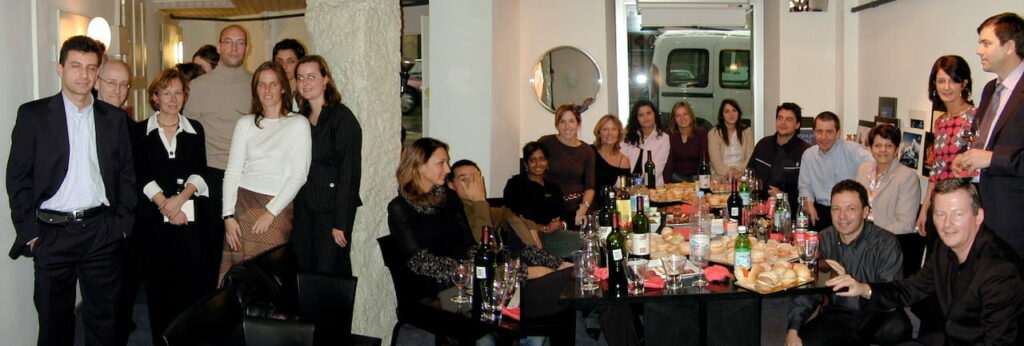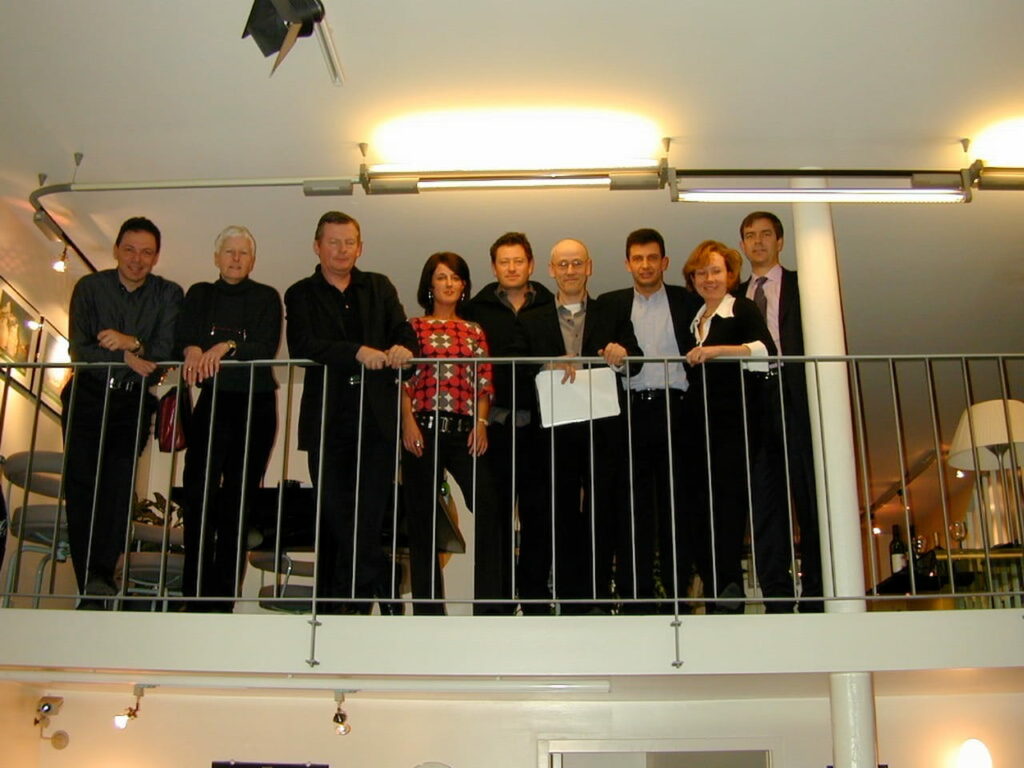I became a Swiss national with my heart and soul. Since becoming Swiss, I have never used another passport and have only renewed the Austrian one as a security measure. I have voted in every single referendum (there are about five per year) and always read attentively the excellent material that accompanies each vote. Whenever I see people on the streets collecting signatures for a referendum, I stop and speak with them. I don’t always sign their petitions, but in case of doubt I do, so that they’re put to a referendum. I find that it’s an incredible privilege to participate so regularly in the civic life of Switzerland, a country that, as Borges said ‘has taken the strange resolution to be reasonable’.
A few weeks after obtaining my Swiss papers, I was stopped by a policewoman in front of the Lausanne train station. I had parked illegally, and heard a knock on my window. I got out of the car and the policewoman sternly asked me if I realised that I was in a place where under no circumstances parking was allowed. ‘I’m sorry,’ I said, ‘I realise this isn’t right.’ ‘Show me your driver’s licence and your car papers,’ she said. While I was pulling out the documents, I asked her if she didn’t want to see my ID card too. ‘No,’ she said. I looked disappointed, and she noticed it.
After looking at my other papers, the policewoman asked: ‘Why did you want to show me your ID?’ ‘I’ve just become a Swiss citizen,’ I said, ‘and I’ve been dying for the first opportunity to show my ID.’ We then started a longer conversation about becoming Swiss. The policewoman asked me where I was originally from, what had motivated me to become Swiss and how the process had been. At the end she said: ‘There will be no fine for you today, we need more people like you’. ‘Oh no,’ I said, ‘I merit a fine and you should give it to me, it’s only fair, I insist.’ ‘You know,’ she said, ‘fines are at the discretion of the police force. We can quite legally decide that we will not fine someone, if we think it’s in the public interest to do so. Your love for this country and your attitude really touched me and I think I’m right in offering this “non fine” as a thank you from the Swiss people for having joined us.’
Saatchi & Saatchi Simko was launched in January 2004. Initially we had little success. Saatchi & Saatchi had promised to introduce us to some of their big clients, including P&G, who had their European offices in Geneva, but it took time to set this up, and there were people within Saatchi who preferred not to make changes too quickly to their existing global arrangements with large clients.
In the summer of 2004, our big opportunity came. Novartis, one of the world’s largest pharmaceutical companies called for a worldwide pitch. Their European offices were in Nyon, very close to Geneva, from where many of their largest global brands were managed. Their other global brands were handled out of Parsippany, New Jersey, very close to Saatchi’s New York office.
The joint Geneva–New York team we set up to handle the pitch was a disaster. The lead was at Saatchi New York, which was in a state of turmoil, with the CEO on his way out. I couldn’t get through to him and the team managing the day-to-day pitch preparation simply ignored us. I therefore had no clue as to what was being developed or would be presented to Novartis.
I travelled to New York to prepare for the pitch, but the team in charge only showed me their proposal the night before our presentation. It was disastrous, and I was massively disappointed. There was, however, a great creative idea for the brand Voltaren, which centred around ‘The Joy of Movement’, but the stories that had been chosen to illustrate it were terrible.
The ride from our hotel in Manhattan to the client’s office in Parsippany was by car and took about 90 minutes. As luck would have it, I was alone in the taxi with the creative director in charge of presenting the ‘Joy of Movement’ campaign. I asked him how he felt about the presentation and he said that he was terrified. ‘What I have to present is awful,’ he said.
I then asked him if he had better ideas and he said yes, of course, but that none had been chosen by the New York team. Could he tell me any of them, I asked. The creative director, who came from Saatchi’s London office, then started rattling off one TV spot story after the other. His stories, for which he had no written scripts, were clever, insightful and funny. I turned to him and said: ‘Present what you just told me.’ ‘What??’ he said. ‘We have agreed with the team in the New York office that we’ll present other material.’ ‘Ignore them,’ I said. The anxious creative director’s jaw dropped. He added: ‘But I haven’t even written down these stories.’ ‘You can write them down after the presentation,’ I said.
So, for the global pitch to one of the world’s largest pharmaceutical companies, and after months of preparation, we presented advertising material that had been put together a few minutes before, in the taxi! The New York team were completely taken aback, not only by the creative work, which many of them had never heard about, but also because I took over the meeting and, without any supporting material, presented the ‘Joy of Movement’ concept by walking around the room. The creative director did the same.
It was theatre—not the usual formal agency presentation. Without drawings or other supporting material, the creative director and I just enacted one scene after the other, and elaborated on the concept we had in mind for Voltaren. We illustrated with stories how the ‘Joy of Movement’ idea would work over time and how very adaptable it was to different contexts, with ideas that we mostly invented on the spot. We made the audience laugh and the Novartis people were totally engaged. Before the startled Saatchi New York team could react, I cut short the presentation and asked if there were any questions. There were lots, and I personally handled all of them, giving our colleagues from New York no chance to intervene.
Before the meeting was over, I turned to Larry Allgaier, the global CEO and said: ‘A few months ago, when I sold my business to Saatchi, it was so that my team in Geneva and I could service companies like yours. If you award us your business, you will not be “another” client for us, you’ll receive a service like no other agency will be able to give you, because our team and I have been dreaming for an assignment like this to show the world what we are capable of.’
Novartis awarded our office in Geneva the Voltaren business. Most of the TV spots that my creative director invented in the taxi on the way to the presentation were produced and were hugely successful. Seventeen years after our 2004 presentation, Voltaren is still signing all of its advertising, in all parts of the world, with ‘The Joy of Movement’. Most importantly, the Votaren business grew like a rocket and is now one of GSK’s billion-dollar brands.
After Voltaren, our Geneva office was awarded the global business of Otrivin, Fenistil and Lamisil, all of them global brands. Novartis asked Kevin Roberts, our global CEO, that I be personally put in charge of all of their business with Saatchi & Saatchi, and after he agreed, they awarded the global brands Theraflu and Excedrin to Saatchi’s New York office, who on these assignments reported to me. After less than three years, Novartis became Saatchi & Saatchi’s fourth largest global client and, in some ways, its most innovative.
The River
Pedro Simko

The River
Pedro Simko


